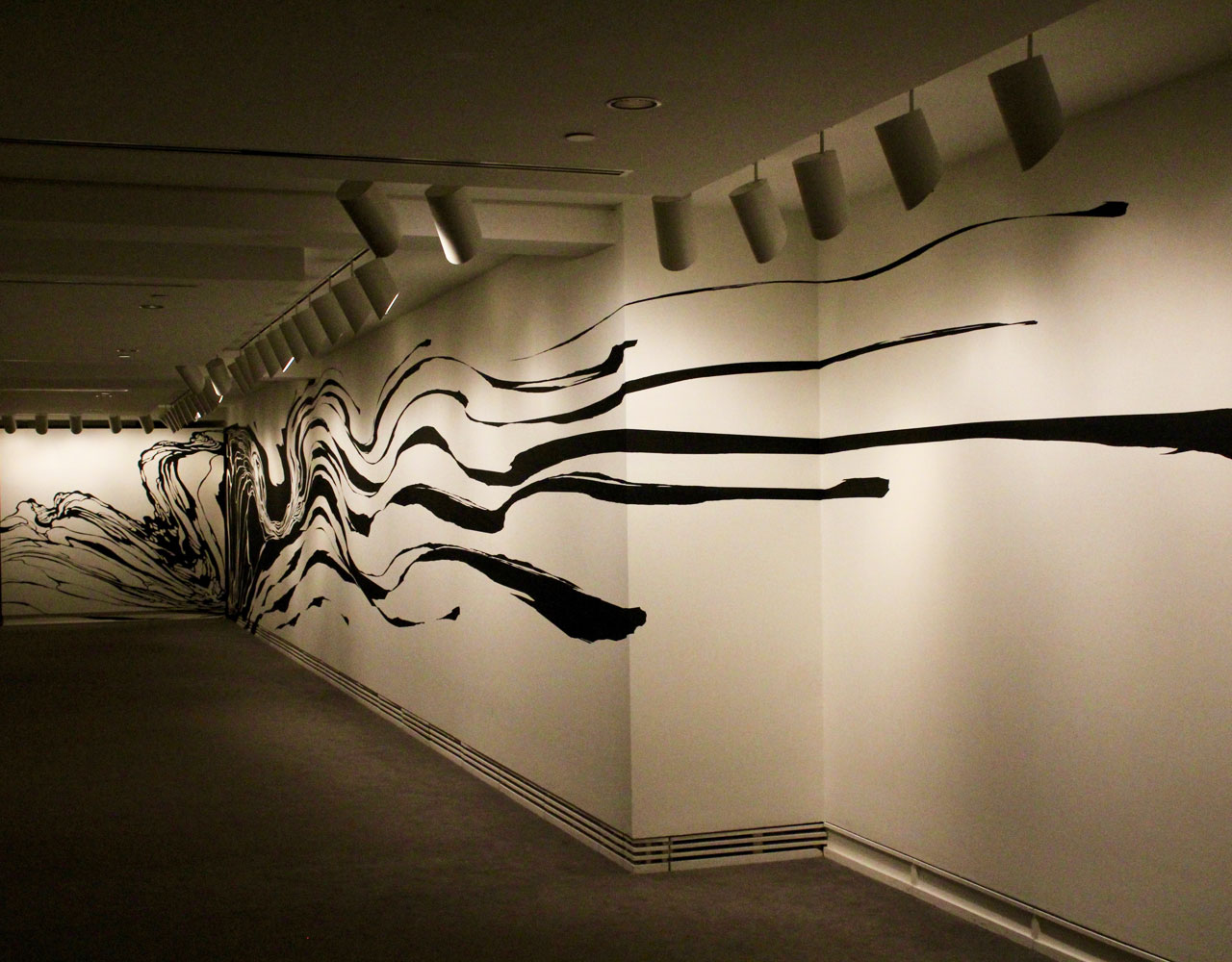Sun K. Kwak, a New York-based Korean artist, has been practising what she calls “space drawings” since 1995. As of Jan. 15, the Carleton University Art Gallery (CUAG) is the most recent space to host her work.
The artist installed her exhibit called Untying Space, which is her first solo exhibition in Canada, over a two-week period. Lines of black masking tape weave across the white walls of the gallery’s mezzanine, creating bold and dramatic waves of contrast.
Kwak, who was trained in painting, calls this method “drawing.”
“As a medium, black masking tape freely shifts between two and three dimensional planes,” she said over email. “ ‘Untying’ means freeing the space and myself through lines, and transforms the space into a new ‘pictorial reality.’”
Before applying the tape, Kwak said she visualizes the room as previously unseen space and time that exists only in her imagination. While some of the designs are based on pre-planned sketches, much of the installation is completed by improvising. She then sticks the tape to the wall by hand and tears away pieces to reflect her vision.
She described Untying Space as “a visual response to the architectural structure, rolls of the space, and the history of Ottawa.”
Euijung McGillis, the curator of Kwak’s show, explained in an email that Kwak chooses to use masking tape and the space around her, rather than traditional brushes, paint, and canvas, because it allows her to feed off the energy of spectators, and it does not limit her art to a static workspace.
“[This] expands her drawing surface to three-dimensional spaces that could invite other actors to her art-making, such as architectural vocabulary, local history, visitors’ reactions, their movement, and so on. All of these become part of her space drawing,” she said.
McGillis added that the CUAG is a suitable home for Kwak’s art.
“It has been a venue for many thought-provoking exhibitions by challenging our perceptions and making us question the boundaries of widely accepted socio-political norms, aesthetic perceptions, and artistic freedom and originality. I thought Sun’s art practice resides in the same spirit of the CUAG,” McGillis said.
When the exhibition ends, the tape will be removed and so will any physical trace of the art’s existence. This is part of the unique experience provided by Kwak’s artistic method, McGillis said.
“Her drawings will disappear when the exhibition ends. Her work continues to live only in the memories of the visitors, installation shots, and other intangible fragmentary archives of some sort. I find this aspect of her work extraordinary,” she said.
The exhibition will be open until April 29.
Photo by Aaron Hemens






